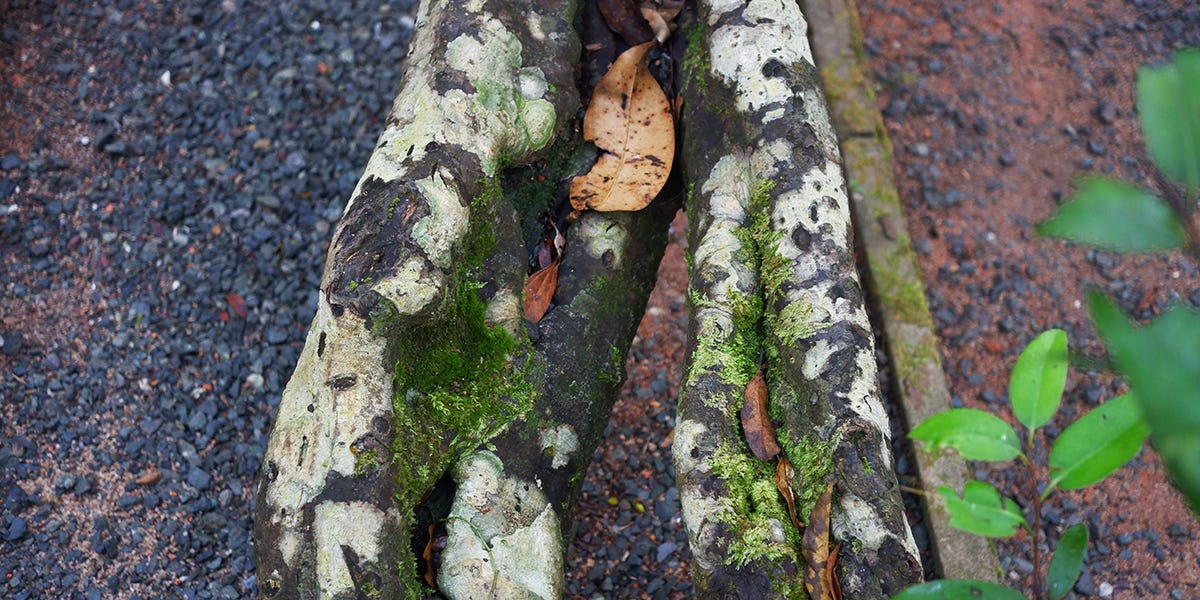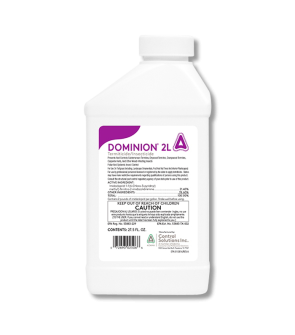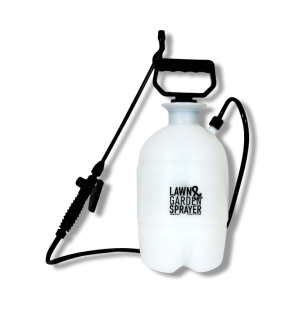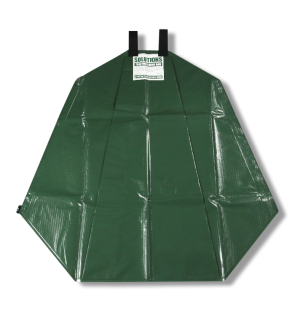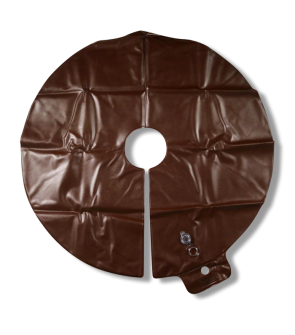Gain access to personalized product screening, the best pricing, rewards, and more!
Most Effective Products
Crape Myrtle Bark Scale Control: How To Get Rid of Crape Myrtle Bark Scale
This page is a general DIY article on eliminating crape myrtle bark scales from your plants using the products and methods suggested throughout this guide. Follow this DIY guide and use the recommended products, and we guarantee 100% control over crape myrtle bark scale on your property.
Crape myrtle bark scale is a relatively new problem discovered on crape myrtle trees within the past 10 to 15 years. Imported to the States from China, it has rapidly spread and has begun to show up in many areas where crape myrtle has been planted around the country, particularly in the South in Texas.
Crape myrtle bark scale is a scaled insect. Because of its tiny size, this pest may not be immediately noticed on a tree. The population would have to get pretty big to notice large-scale clusters on parts of tree branches. When there are severe infestations, you will see them practically cover large chunks of the tree. These areas will also carry a lot of black sooty mold.
The presence of crape myrtle bark scale may not be a severe issue compared to other plant diseases, but it can be detrimental to the productivity of the tree. One of the problems this pest brings about is limiting blooms; you will see a little bit of reduction in the blooms. Also, honeydew production from the bark scale on the leaves may begin dripping sap down off the leaves. This can be a problem if you park under the tree, as they can create a mess. Also, the sap is known to draw ants.
If you have crape myrtle bark scale growing on your trees, our DIY guide has the advice and products to eliminate it quickly and affordably.
Identification

Before you can carry out a treatment program, you need to know what the crape myrtle bark scale looks like to identify whether or not it's the issue you see. Misidentification can lead to using the wrong, ineffective treatment method, which can end up being a waste of time and money. These are the defining characteristics that make up the crape myrtle bark scale to help you confirm its presence on your trees:
- Crape myrtle bark scales appear as white to gray-colored, felt-covered clusters on tree trunks, twigs, branches, crotches, or bark. When crushed with a finger, they ooze a pink blood-like substance.
- Adult female crape myrtle bark scales have short legs and long, thread-like sucking mouthparts. The adult crape myrtle bark scales are pink with two wings, more elongated in shape, and two long filaments extending from their abdomen.
- Adult males have no mouthparts as they aim to fly to breed with adult females and die shortly after. They feed on foliage leaves during their nymphal stage.
- Crape myrtle bark scales are approximately 2 mm in length, depending on the insect's life cycle.
- Once mated, the female crape myrtle bark scale will carry an ovisac (egg-containing capsule). These pink-colored eggs will be within the white ovisac until they are ready to hatch into crawlers. The crawlers will also be pink in coloration, have legs and antennae, elongated tube-like mouthparts, and be hardly visible to the naked human eye without a microscope. They will lose these appendages when they reach the second nymphal stage.
Refer to the description and images above to be sure you are dealing with crape myrtle bark scale. If you cannot identify the pest by itself, contact us by email or phone with a photo or sample so we can better assist you.
Inspection

Once you have confirmed that you are dealing with the crape myrtle bark scale, you can proceed with an inspection. During this phase, you will pinpoint the areas where the scale is active so you know where to focus your pesticide applications.
Where To Inspect
Crape myrtle bark scales are mainly found on crape myrtles, but they can infest other plants such as pomegranate, persimmon, boxwood, fig, privet, and American beautyberry.
They can be seen on the trunks, stems, twigs, branch crotches, under loose bark, at pruning sites, and anywhere else on the plant bark.
What To Look For
Crape myrtle bark scales are rarely on foliage leaves, but they can leave behind a sticky honeydew residue that later turns into a black sooty mold. This mold can spread to the infested plant's leaves, trunk, twigs, and bark.
Treatment
Before using pesticides, ensure you have the proper personal protective equipment (PPE).
The most effective way to kill crape myrtle bark scales is to drench the soil with a pesticide containing dinotefuran or imidacloprid.
Dominion 2L contains imidacloprid and is a systemic insecticide, which means the plant takes the product and spreads it throughout the foliage. That way piercing and sucking insects, such as crape myrtle bark scales, will be affected.
Crape myrtle bark scales are not explicitly listed on the label but are under the term scales, which Dominion 2L is labeled to control.
Step 1: Hose Down Your Tree or Shrub
Using a hose, spray your plant's trunk and limbs heavily with water. This action will help to push off any crape myrtle bark scales and eggs.
Let it dry before making any further treatments.
Step 2: Measure and Mix Dominion 2L
Measure your tree trunk or shrub to determine how much Dominion 2L you must apply.
Determine the diameter of your tree trunk at diameter breast height (DBH). To do this, begin by measuring 4.5 feet above the ground level. Hold the ruler or tape measurer against the tree, then wrap it around the middle of the tree at the DBH, and record your findings.
To find a shrub's height, measure from the base of the stem to the highest point of the canopy. Typically, the highest point is the tip of the apical bud.
Generally, you should use 0.1 to 0.4 oz. of Dominion 2L per inch of trunk diameter.
For shrubs, apply 0.1 to 0.2 fl. oz. of product per foot of shrub height.
You will want to use the soil trench to treat the soil surrounding the plant.
Put half of the water in a bucket or sprayer, then pour in the proper amount of Dominion 2L. Pour in the remaining half of the water.
If you are mixing in a bucket, stir with a disposable stick. For sprayers, secure the tank lid before shaking to ensure the contents dissolve evenly in the water.
Step 3: Apply Dominion 2L
Take the mixed Dominion 2L solution and pour it uniformly around the base of the plant. Use no less than 10 gallons of water per 1,000 sq. ft.
Direct application to the root area. Remove plastic or any other barrier stopping the solution from reaching the tree or shrub root zone.
Prevention
After removing the crape myrtle bark scales, you will want to ensure they do not return. To ensure crape myrtle bark scales are kept away, follow the suggested preventative techniques:
- Maintain a good lawn care routine and monitor your plants for any changes to ensure that crape myrtle bark scale stays away from your property. Prune away any previously infested foliage to help prevent the spread of scale insects and allow healthier plant parts to recover. Make sure to dispose of the trimmed plant parts properly.
- Water your plants regularly to maintain proper health and fight off future disease activity. To ensure the proper amount of water to trees, we recommend using the Solutions Tree Watering Bag. This tree watering bag will deliver 20 gallons of water slowly to trees that are 1 to 8 inches in trunk diameter and have branches 25 inches from the ground. Place 1 Solutions Tree Watering Bag around trees with a diameter of up to 3 inches. Zip 2 of the Solutions Tree Watering Bags together for trees 4 to 8 inches in diameter. Wrap the bag around the tree trunk with the tag facing outward and zip the ends together from bottom to top. Insert your water hose into the bag's opening until it is filled to the desired level. For young, newly planted, or established trees, we suggest using the Solutions Tree Watering ring. This will slowly deliver 15 gallons of water to these plants. Set one ring around the tree's base. Fill the ring with water until it is full. Most trees will not need to be watered more than once a week. Regular watering with a garden hose is recommended for other shrubbery and woody plants. Be sure to water with no more than 1 inch of irrigation once per week. Water early in the morning so the foliage has enough time to absorb the irrigation.
- Apply the Dominion 2L mixture as a preventative treatment to keep crape myrtle bark scales from reestablishing on your tree. These pests are most active from late April to early May. To treat trees, apply 0.1 to 0.4 fl. oz. of Dominion 2L per inch of trunk diameter. To treat shrubs, use 0.1 to 0.2 fl. oz. of product per foot of shrub height. Drench around the plant root base evenly.
Key Takeaways
What Are Crape Myrtle Bark Scale?
- Crape myrtle bark scales are small-scaled insects known to infest trees, especially crape myrtles, and interfere with productivity.
How to Get Rid of Crape Myrtle Bark Scale
- Treating the crape myrtle bark scale will require a soil drench application with a systemic insecticide like Dominion 2L.
Preventing Crape Myrtle Bark Scale
- Prevent the reestablishment of crape myrtle bark scale with regular maintenance tasks like pruning and watering your tree. You can also conduct preventative treatments of the Dominion 2L.






